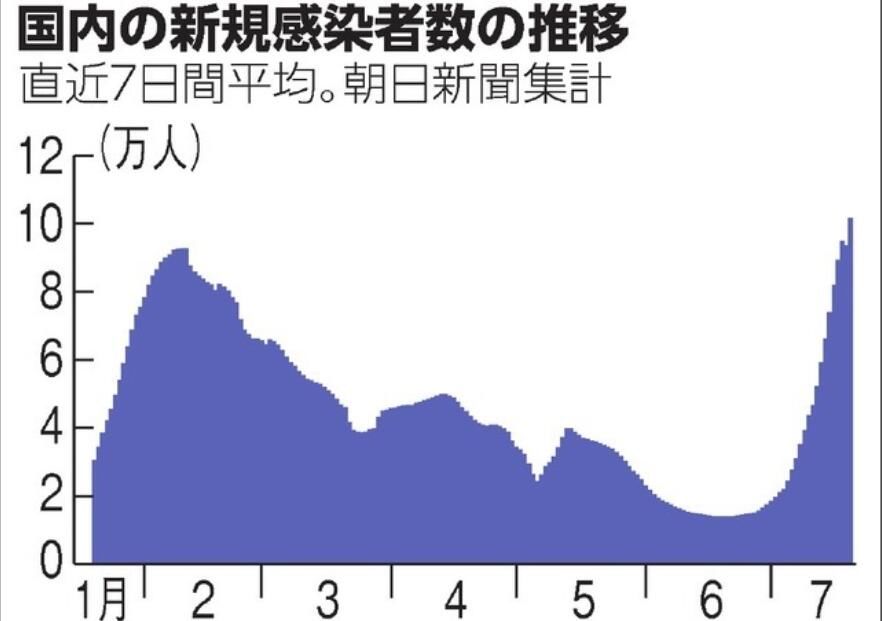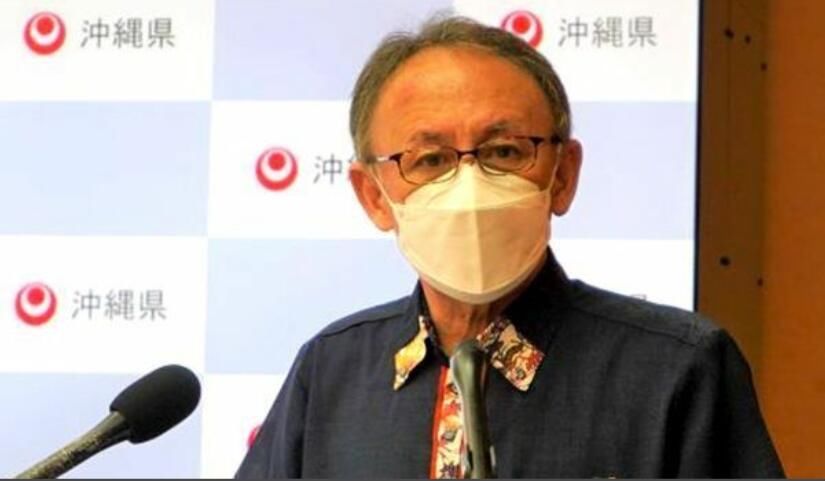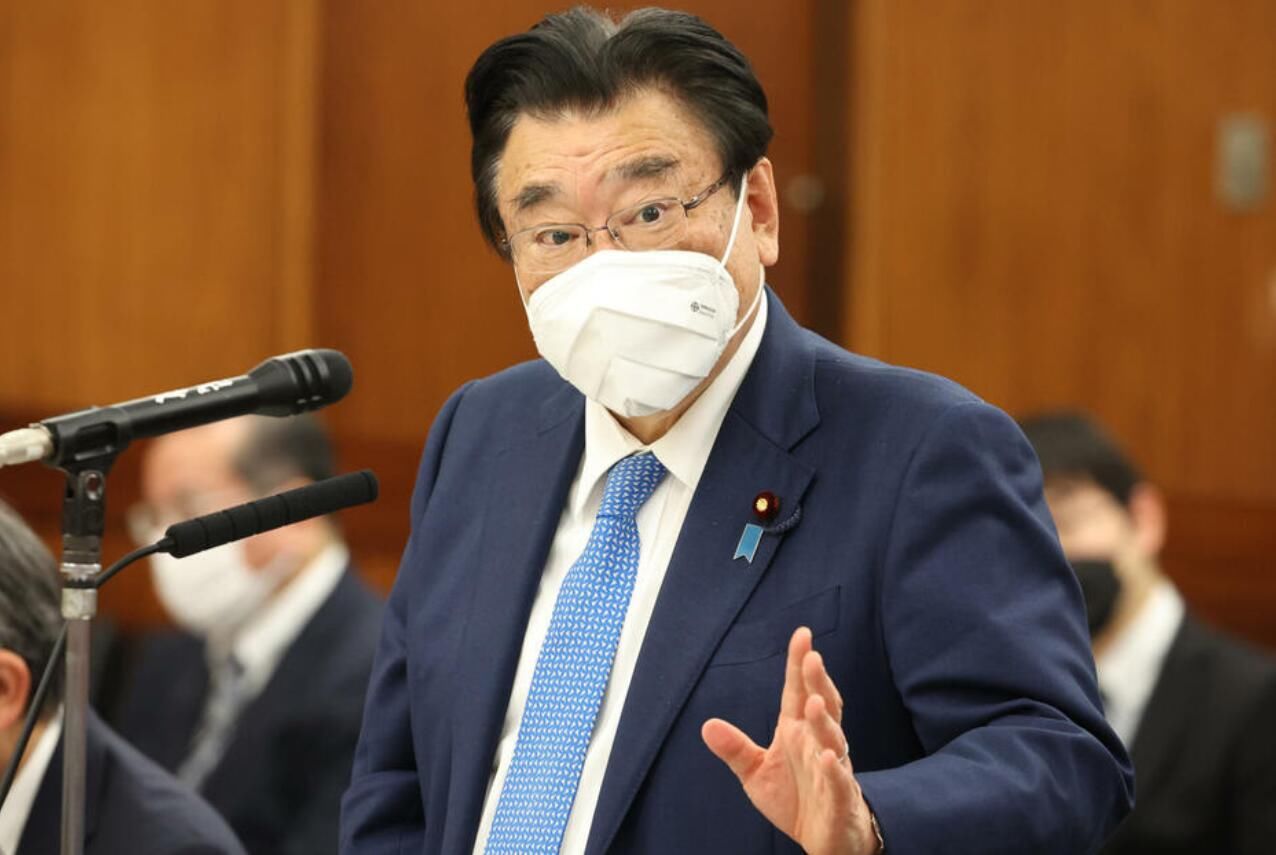This article is reprinted from: People’s Daily Online

The recent trend graph of the number of newly confirmed cases in Japan. (Photo source: “Asahi Shimbun”)
People’s Daily Online, Tokyo, July 22 (Reporter Chen Jianjun) Recently, the new crown epidemic in Japan has rebounded again and has experienced explosive growth. On July 21, there were 186,246 new confirmed cases of new coronary pneumonia in Japan, and the number of new cases in a single day exceeded 180,000 for the first time, setting a new record for two consecutive days. Among them, there were 31,878 new confirmed cases in Tokyo, exceeding 30,000 for the first time in a single day; 22,047 new confirmed cases in Osaka Prefecture, setting a new record for new cases in a single day, and exceeding 20,000 for 2 consecutive days example. In addition, 35 prefectures across Japan set a new local record for new single-day new additions on that day.
Tokyo raised its alert level to the highest level
According to the Asahi Shimbun, the Tokyo Metropolis has The government’s decision to raise the alert level of medical institutions’ ability to provide treatment to the highest level of four indicates that the local medical care system is already facing a state of urgency.
In addition, in response to the spread of the new crown epidemic, Tokyo has already raised the epidemic alert level to the highest level of four on July 14. On July 20, there were 20,401 new confirmed cases in Tokyo, which exceeded 20,000 again after a few months since February 5; on July 21, there were 31,878 new confirmed cases in Tokyo, a single day. The number of new cases exceeded 30,000 for the first time. The current epidemic situation is very serious.
As of July 20, the overall occupancy rate of new crown beds in Tokyo has reached 43.5%, and the occupancy rate of intensive care beds is 13.6%. At present, there are 3,142 hospitalized patients with new crowns in the local area, and another 45,903 patients are coordinating hospital locations or nursing homes.
Due to the recent surge in newly diagnosed cases, the occupancy rate of new crown hospital beds exceeded 40% on July 12, and the Tokyo Metropolitan Government has asked medical institutions in its jurisdiction to increase the number of hospital beds previously guaranteed to about 5,000. 7,000 to meet the increasing demand for hospitalizations.
Okinawa Prefecture implements a “medical emergency”
Recently, due to the rapid spread of the new crown epidemic in Okinawa Prefecture, 5,250 new confirmed cases have been reported on the 21st The number of cases exceeded 5,000 for 2 consecutive days, and the number of new cases in a single day once again set the highest local record. The Okinawa prefectural government announced that it would implement a “medical emergency” locally, and called on the public to try not to go to the clinic if it is a physical examination or a general mild illness. seek medical attention.

Okinawa Prefecture Governor Tamaki Danny
Okinawa Prefecture Governor Tamaki Danny announced on the 21st that he would take emergency prevention and control measures from July 22 to August 14, and asked local people to “don’t go out unless it’s an emergency” and “dinners should not exceed 4 people and end within 2 hours.” “. In the future, according to the development of the epidemic, measures to restrict travel cannot be ruled out.
On the 21st, the utilization rate of the local new crown hospital beds has reached 71.5%, and the beds used by other patients are basically full. It is reported that as of July 20, the number of newly confirmed cases per 100,000 people in Okinawa Prefecture reached 1,636 in the last week, the most serious in Japan. Yucheng Danny appealed at a press conference held on the 21st: “In order to control the rapidly spreading new crown epidemic and protect the lives of the people, please unite as one and help the government overcome this crisis.”
Japanese experts: The number of new confirmed cases in a single day may continue to rise
In response to the problem that the number of newly confirmed cases in Japan exceeded 180,000 for the first time on the 21st and set the highest record for 2 consecutive days, the An expert group from Japan’s Ministry of Health, Labour and Welfare predicted on the 21st that the single-day increase in the country may continue to rise, and it is necessary to be vigilant and pay close attention to the development of the epidemic.

Minister of Health, Labour and Welfare Shigeyuki Goto.
At the meeting of the expert group, Minister of Health, Labour and Welfare Shigeruyuki Goto said: “At present, there is a push to increase the number of hospital beds and build new temporary medical facilities, and to speed up medical staff and elderly care facilities. The pace of staff inoculating the fourth dose of the new crown vaccine. However, measures to restrict people’s travel have not been considered at present.”
However, many experts believe that in view of the current infection situation and the future development trend It is predicted that it may be time to study measures such as “emergency” to restrict people’s travel.
The Japanese government considers shortening the quarantine days for close contacts
The Japanese government intends to place these close contacts among family members who have lived with patients with new crown infection. The number of days for observation in one’s own home has been shortened from seven days to five, and research has begun on this. Japanese Prime Minister Fumio Kishida and Minister of Health, Labour and Welfare Shigeruchi Goto and other relevant cabinet members will discuss this issue on the 22nd, and once the implementation policy is determined, it will be announced as soon as possible within the same day.
Japanese media analysis believes that due to the rapid spread of the new crown epidemic in Japan again, by shortening the home isolation time of close contacts, it can not only alleviate the problem of the shortage of front-line medical staff, but also reduce The adverse impact of the epidemic on socioeconomic activities.
In addition, due to the surge in newly confirmed cases, the fever clinics of medical facilities have been flooded with people. Therefore, the Japanese government has begun to study the provision of simple nucleic acid detection reagents in fever clinics, so that patients with symptoms can test themselves. , in order to reduce the burden on medical staff.